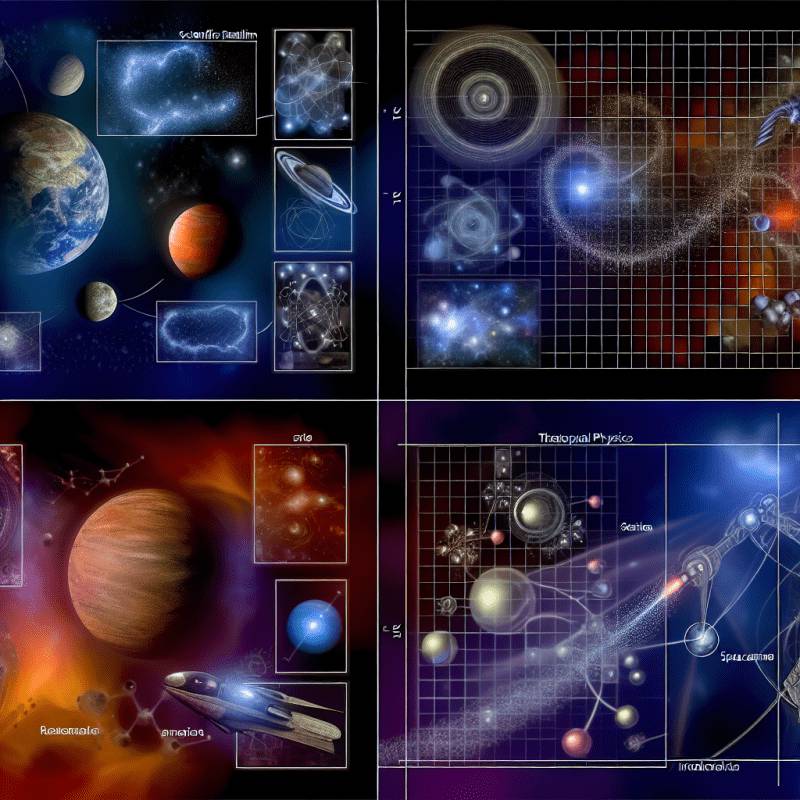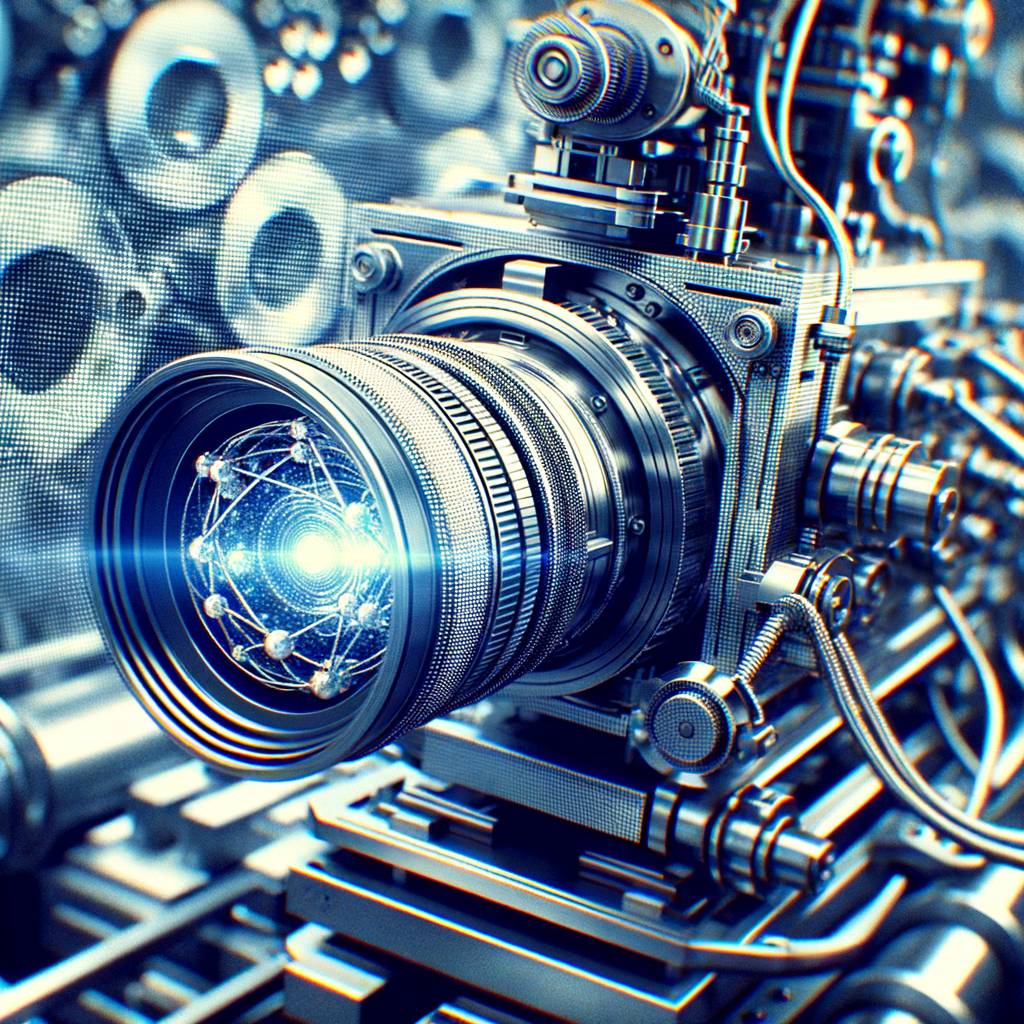Exploring the Science Behind The Expanse: Fact or Fiction?
“The Expanse,” a popular science fiction series, has captivated audiences with its intricate plotlines and complex characters. But what truly sets it apart is its commitment to scientific accuracy. The show’s creators have gone to great lengths to ensure that the world of “The Expanse” is as scientifically plausible as possible. But how real is the science behind “The Expanse”? Let’s delve into the fascinating world of this series and explore the fact and fiction behind its science.
The series is set in a future where humanity has colonized the solar system, with Earth, Mars, and the Asteroid Belt being the primary locations of human habitation. The depiction of life in space in “The Expanse” is grounded in reality. The show accurately portrays the effects of living in a low-gravity environment, such as muscle atrophy and bone density loss. It also realistically depicts the challenges of space travel, including the dangers of radiation and the difficulties of maneuvering in zero gravity.
One of the most striking aspects of “The Expanse” is its depiction of space combat. Unlike many other science fiction series, “The Expanse” eschews flashy laser battles in favor of a more realistic approach. The show’s space battles are based on actual physics, with ships maneuvering using Newton’s laws of motion and weapons that are plausible extensions of current technology. The series also accurately portrays the devastating effects of high-speed collisions in space, which can cause catastrophic damage due to the immense kinetic energy involved.
However, “The Expanse” is not without its scientific liberties. The series features a mysterious alien substance known as the “protomolecule,” which has the ability to manipulate matter and energy in ways that defy our current understanding of physics. While the protomolecule makes for compelling storytelling, it is firmly in the realm of science fiction.
Another area where “The Expanse” strays from scientific accuracy is in its depiction of artificial gravity. In the series, ships are able to generate gravity by accelerating or decelerating, which is a concept grounded in real physics. However, the show glosses over the fact that such maneuvers would require an enormous amount of energy, far beyond what current technology can produce.
Despite these departures from reality, “The Expanse” remains one of the most scientifically accurate science fiction series on television. The show’s creators have consulted with scientists and experts to ensure that the series is as grounded in reality as possible. This commitment to scientific accuracy not only enhances the believability of the series but also makes it a fascinating exploration of the challenges and possibilities of space colonization.
In conclusion, while “The Expanse” takes some liberties with science for the sake of storytelling, it is largely grounded in real-world physics and biology. The series offers a compelling vision of what life in space might look like, complete with the challenges and dangers that come with it. So, while we may not encounter alien protomolecules or generate artificial gravity anytime soon, “The Expanse” provides a tantalizing glimpse into a future that is not entirely beyond the realm of possibility.
The Expanse: A Deep Dive into its Scientific Accuracy

“The Expanse,” a popular science fiction series, has captivated audiences with its gripping narrative and complex characters. But what truly sets it apart is its commitment to scientific accuracy. The show’s creators have gone to great lengths to ensure that the world of “The Expanse” is as scientifically plausible as possible, making it a fascinating study for both science fiction enthusiasts and science buffs alike.
The series is set in a future where humanity has colonized the solar system, with Earth, Mars, and the Asteroid Belt each housing distinct societies. The depiction of life in space is one of the areas where “The Expanse” shines in terms of scientific accuracy. The show takes into account the effects of living in low gravity environments on the human body, such as muscle atrophy and bone density loss. It also considers the psychological impact of living in confined spaces for extended periods, a reality astronauts today can attest to.
The series also delves into the intricacies of space travel. Unlike many science fiction narratives that gloss over the complexities of moving between planets, “The Expanse” pays close attention to the physics involved. The ships in the series use a propulsion system based on actual physics, and the show accurately portrays the effects of high-speed travel on the human body. For instance, characters are often shown bracing for the intense g-forces during acceleration, a detail often overlooked in other sci-fi series.
Moreover, “The Expanse” takes into account the realities of communication in space. Messages between planets are not instantaneous but are subject to light-speed delay, a fact that becomes a crucial plot point in several episodes. This attention to detail adds a layer of realism to the series that is often missing in other space-based narratives.
However, it’s worth noting that “The Expanse” is not a documentary, and there are areas where it veers away from strict scientific accuracy for the sake of storytelling. The series features a mysterious alien substance known as the “protomolecule,” which has properties and abilities that defy our current understanding of physics. While this element of the series is purely speculative, it serves as a reminder that “The Expanse” is, at its heart, a work of fiction.
The creators of “The Expanse” have also made some deliberate choices to bend the rules of science for the sake of visual storytelling. For example, space battles in the series are often depicted with sound, even though sound cannot travel in the vacuum of space. This decision was made to enhance the viewing experience, even if it’s not strictly accurate.
In conclusion, while “The Expanse” takes some liberties with science for the sake of narrative and visual impact, it remains one of the most scientifically accurate science fiction series to date. Its commitment to portraying a plausible vision of humanity’s future in space sets it apart from its peers and offers a fascinating glimpse into what life beyond Earth might look like. Whether you’re a fan of gripping narratives, complex characters, or hard science, “The Expanse” offers something for everyone.
The Realism of Space Travel in The Expanse: A Scientific Perspective
“The Expanse,” a popular science fiction series, has captivated audiences with its gripping narrative and stunning visuals. But what truly sets it apart is its commitment to scientific accuracy, particularly in its depiction of space travel. The series, set in a future where humanity has colonized the solar system, offers a fascinating exploration of the challenges and realities of life beyond Earth. But how scientifically real is the world of “The Expanse”?
From the outset, “The Expanse” has been lauded for its realistic portrayal of space travel. The series takes into account the physical laws that govern the universe, from the effects of gravity to the challenges of propulsion. In the world of “The Expanse,” there are no warp drives or teleportation devices. Instead, spaceships are propelled by ion drives, a technology that, while still in its infancy, is grounded in real-world science.
The series also pays close attention to the effects of space travel on the human body. Characters in “The Expanse” experience the physical strain of high-speed travel, from the crushing g-forces during acceleration to the disorienting effects of zero gravity. This is a stark departure from many science fiction narratives, which often gloss over these realities. In “The Expanse,” the human body is not built for space travel; it is fragile and vulnerable, a fact that adds a layer of tension and realism to the series.
Moreover, “The Expanse” explores the psychological toll of life in space. The isolation, the claustrophobia, the constant threat of disaster – all these factors contribute to a sense of unease and tension. This is not a romanticized vision of space travel; it is a gritty, realistic portrayal that underscores the harsh realities of life beyond Earth.
Yet, despite its commitment to scientific accuracy, “The Expanse” is not a documentary. It is a work of fiction, and as such, it takes certain liberties with the laws of physics. For instance, the series features a mysterious alien substance known as the “protomolecule,” which has the ability to manipulate matter and energy in ways that defy our current understanding of science. This is a clear departure from reality, but it serves a narrative purpose, introducing an element of the unknown into the otherwise scientifically grounded world of “The Expanse.”
In addition, the series occasionally bends the rules of physics for the sake of storytelling. For instance, spaceships in “The Expanse” are often shown maneuvering in ways that would be impossible given the realities of space travel. These moments, while not strictly accurate, add to the drama and excitement of the series.
In conclusion, “The Expanse” offers a compelling blend of scientific realism and narrative-driven fiction. Its depiction of space travel is grounded in real-world science, but it is not afraid to bend the rules for the sake of storytelling. This balance between accuracy and creativity is part of what makes “The Expanse” such a captivating series. It invites us to imagine a future where humanity has reached the stars, while reminding us of the challenges and dangers that await us in the final frontier.



